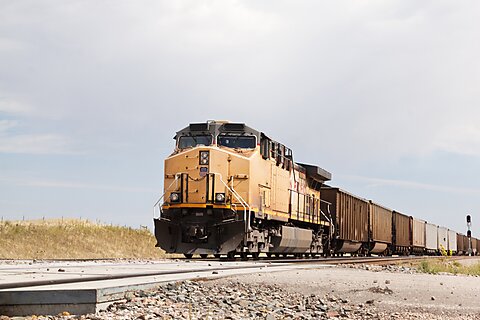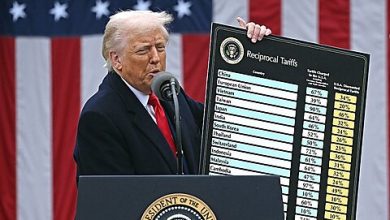Federal Rail Administration’s New Two-Person Train Crew Rule Is a Union Concession, Not a Legitimate Safety Rule

David Kemp and Peter Van Doren
The Federal Rail Administration (FRA) just finalized a rule that would require freight trains to operate with at least two‐person crews. Transportation Secretary Pete Buttigieg said the rule would improve safety and stop railroads’ potential plans to reduce crews to one even as trains are getting longer. Referencing these plans, he said, “It defies common sense and that changes today.”
But there is no evidence that reducing train crew size would defy common sense, much less that requiring two‐man crews has any benefit. The new rule is an election‐year giveaway to labor unions disguised as a rail safety regulation.
Minimum crew‐size requirements have been one of the key points of contention in historic disagreements between labor unions and railroads. To maintain high demand for labor, the unions have opposed any attempt to reduce the size of train crews, forcing railroads to continue staffing positions long after technology has made them obsolete. For example, railroads were able to eliminate the locomotive fireman, a crewman whose role was shoveling coal and tending to the fire on steam‐powered locomotives, only in the 1960s, thirty years after railroads first used diesel engines. And it was not until after deregulation of freight rail in the 1980s that railroads were able to reduce crews from four to two.
Historically, however, the issue has been negotiated through collective bargaining. The new FRA rule is the first time that crew‐size requirements have been mandated by regulation.
There is nothing to suggest, however, that the rule would do anything other than preserve the use of union labor. When the FRA first proposed a minimum crew‐size rule in 2016 it acknowledged that it could not “provide reliable or conclusive statistical data to suggest whether one‐person crew operations are generally safer or less safe than multiple‐person crew operations.” The final rule “qualitatively discusses the benefits” of the regulation, but provides no estimate of the monetized safety impacts because the FRA “does not have sufficient data to quantify those benefits.”
The FRA’s only empirical justification for the rule is that “the latest annual rail safety data reflects some troubling trends that point toward a need for heightened caution and awareness in railroad safety and operation planning.” As we discussed after last year’s highly publicized derailment in East Palestine, Ohio, freight rail safety has improved dramatically over the past several decades. And though data from last year suggest a small increase in accidents, the trend in accidents over the past 10 years gives no indication that rail safety is deteriorating.
But assume rail safety were deteriorating. Most freight trains in the United States currently operate with at least two‐person crews as required by existing union contracts. Thus, any worrisome trends in rail safety would not stem from railroads’ intentions to move to one‐person crews.
Railroads have long argued that one‐person crews would not be less safe. First, many Amtrak and commuter trains in the United States operate with only one person in the locomotive. Second, freight trains in Europe and Australia also operate with only one person. Research funded by the Association of American Railroads found that Amtrak and European trains with one‐person crews were as safe as US multi‐person crewed freight trains. Thus, the important safety question is whether United States freight trains have characteristics not found in either US passenger trains or European freight trains that require two people to operate safely.
One possibility is that US freight railroads operate longer heavier trains. Freight trains have been getting longer, and the Government Accountability Office has concerns about the safety of longer trains. But, to date, there is no evidence that longer trains are less safe or that they have special considerations that require two‐person crews.
So, if no real safety justification exists, why issue the new rule? The most obvious explanation: this is the latest installment in the decades‐long struggle between labor unions and railroads. The most recent flare up was in late 2022, when Congress, at the urging of the Biden administration, averted a rail strike by enacting legislation imposing a union contract.
In our analysis of the economics of freight railroads, we found that declining revenues induced railroads to cut costs. Because of union wage rigidity railroads have reduced costs through employment reductions, which resulted in staffing shortages and increased burdens on the remaining railroad workers.
In the last round of the fight, the government stepped in on the side of railroads by imposing a contract that largely ignored the union’s main complaints. The new two‐person crew rule appeases unions in an election year.
But the union victory may be hollow. Increasing train size is a railroad response to collective bargaining‐based crew‐size requirements given declining revenues and wage rigidity. Lengthening trains increases worker productivity given those constraints. The new rule locks in those incentives more permanently. In addition the rule may result in increased use of trucking, which is both less safe and less environmentally friendly.
Regulatory interventions to enhance safety should be utilized only when market forces clearly are inadequate rather than to reward interests for electoral support.





